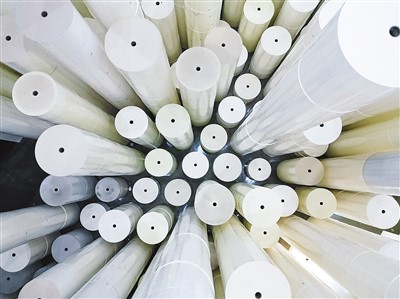What is stearic acid?2
At room temperature, stearic acid appears as a white waxy transparent solid or a slightly yellow waxy solid. Composed mainly of saturated fatty acids C16 and C18, insoluble in water, slightly soluble in cold ethanol, and easily soluble when heated. Slightly soluble in acetone and benzene, easily soluble in ether, chloroform, hot ethanol, carbon tetrachloride, and carbon disulfide. Non toxic and odorless, with general chemical properties of organic carboxylic acids.

Stearic acid is a widely present fatty acid in nature, with varying amounts found in almost all oils and fats. Its content is higher in animal fats, such as butter, which can reach up to 24%, and lower in vegetable oils, such as tea oil at 0.8% and palm oil at 6%. However, the content in cocoa butter is as high as 34%. The production methods of industrial stearic acid mainly include fractionation and pressing. Add a decomposing agent to the hardened oil, then hydrolyze it to obtain crude fatty acids, which are then washed with water, distilled, and decolorized to obtain the finished product, while producing glycerol as a byproduct.
The role and use of stearic acid in the paper industry:
1. Stearic acid is used as a thickener and stabilizer in the paper industry;
2. It is the raw material for making wax lotion. Wax lotion is coated on tracing paper to improve the quality of oil proof paper and waxed paper;
3. It can increase the waterproof, glossy, and printing adaptability of paper.
Stearic acid is a fatty acid widely present in animal and plant oils and fats, mainly divided into two categories: first grade (plant raw materials) and third grade (animal raw materials). Its effects vary depending on the type and application field:
Classification of types of stearic acid
First grade (plant raw materials):
Made from plant oils and fats, such as soybean oil, corn oil, etc., with high purity.
Grade III (animal raw materials):
Made from animal fats such as butter, with a relatively low content.
The main function of stearic acid
√ Moisturizing lubrication:
As a moisturizing agent for cosmetics and skin care products, it can form a protective film to prevent water loss, which is common in lotion, face cream and other products.
√ Anti aging:
It has antioxidant effects, can reduce wrinkles and delay skin aging.
√ Antibacterial and anti-inflammatory:
Used to treat skin inflammations such as seborrheic dermatitis, relieve symptoms such as redness, swelling, and pain.
√ Food processing:
Used as a food additive to provide energy and aid digestion, but excessive consumption may cause constipation.
√ Industrial use:
Widely used in plastic, rubber, candle manufacturing and other fields as a functional additive.
Attention: People with allergies should be cautious when using cosmetics containing stearic acid. It is recommended to choose regular products to reduce the risk of irritation.
What is the market outlook for stearic acid?
The stearic acid market is currently showing a fluctuating upward trend, and its future prospects are greatly affected by raw material costs, supply and demand relationships, and policies.
Current market conditions
In the third quarter of 2025, the stearic acid market experienced a trend of first rising and then falling.
The rise in raw material palm oil prices has driven the cost side support of stearic acid, but fundamental pressures have led to a price drop.
For example, the average price of domestically produced first grade stearic acid in East China in the third quarter was 9751 yuan/ton, an increase of 6.76% compared to the previous quarter, but the price declined in September due to the drag of fundamentals.
Future prospect analysis
√ Raw material cost support:
In the fourth quarter, the raw material palm oil is in a period of reduced production, and there are conditions for rising prices.
The cost side provides support for the price of stearic acid, but the actual boosting effect needs to be observed based on the implementation of demand.
√ Supply and demand balance:
The seasonal pattern of domestic stearic acid supply and demand has weakened.
It is expected that the market size will reach 8.5 billion yuan by 2025, with a compound growth rate of 6.5%. The demand growth in the plastic, rubber, and cosmetics industries will drive market development.
√Industry competition:
Domestic CR6 enterprises occupy more than 50% of production capacity, and high-end production capacity is gradually released to alleviate import dependence, but the low-end market still faces fierce price competition.
√ Policy impact:
Environmental regulations drive the growth of demand for green products, and the market potential of biodegradable products deserves attention.
In summary, the stearic acid market is affected by the short-term competition between raw materials and supply and demand, and may maintain steady growth in the long term.
PRIME CHEMICALS are experienced in polymers, chemicals and modified plastic materials for more than 23 years. If there is any inquiry, welcome to contact us and Whatsapp: 0086 13817820852.




